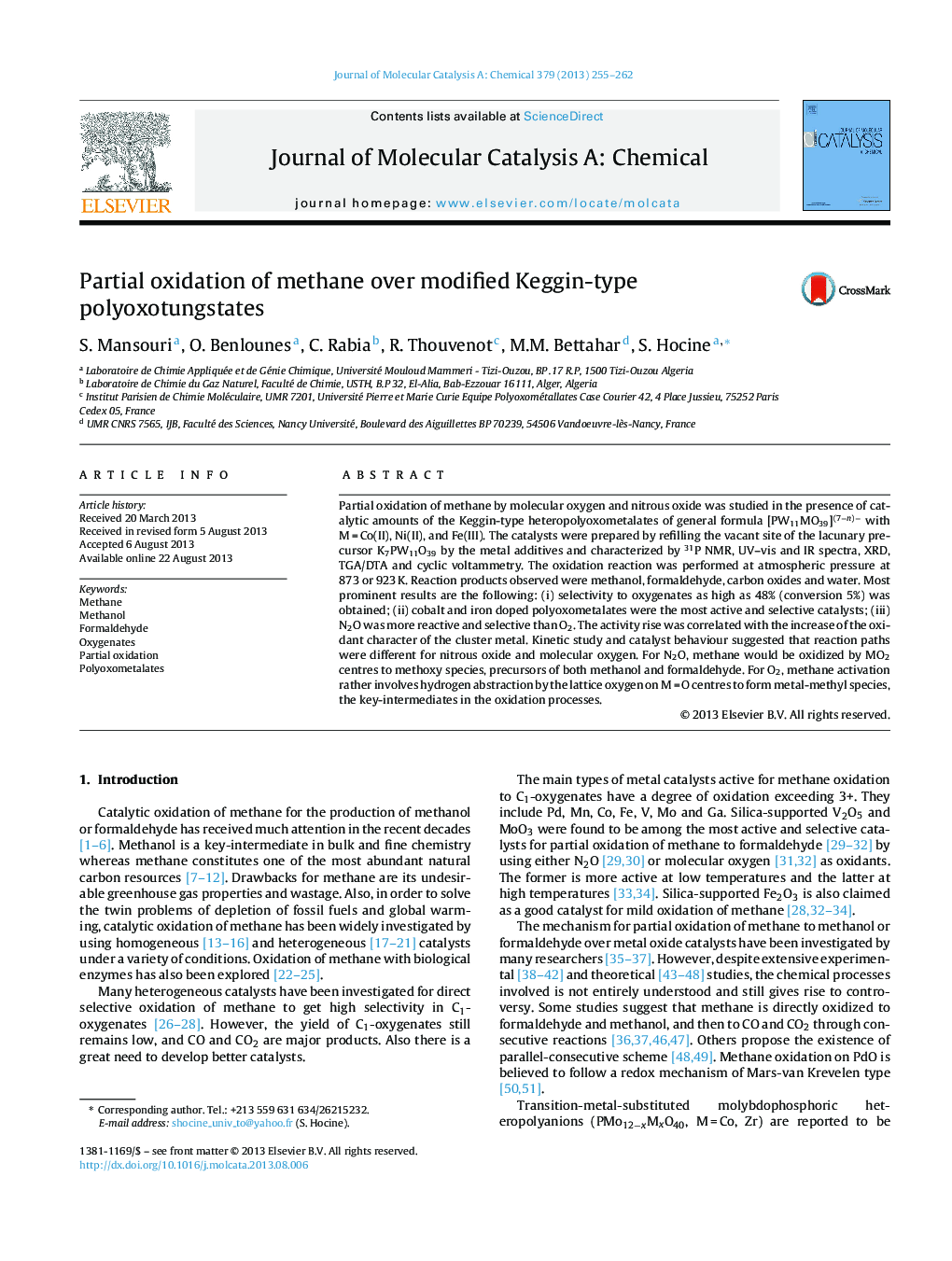| Article ID | Journal | Published Year | Pages | File Type |
|---|---|---|---|---|
| 65670 | Journal of Molecular Catalysis A: Chemical | 2013 | 8 Pages |
•The PW11MO39 (M = Co+2, Ni+2 and Fe+3) compounds were prepared by refilling the vacant site of the lacunary precursor K7PW11O39.•Application in methane partial oxidation.•High selectivity to C1 oxygenates.•Reaction pathway for methane oxidation was proposed.
Partial oxidation of methane by molecular oxygen and nitrous oxide was studied in the presence of catalytic amounts of the Keggin-type heteropolyoxometalates of general formula [PW11MO39](7−n)− with M = Co(II), Ni(II), and Fe(III). The catalysts were prepared by refilling the vacant site of the lacunary precursor K7PW11O39 by the metal additives and characterized by 31P NMR, UV–vis and IR spectra, XRD, TGA/DTA and cyclic voltammetry. The oxidation reaction was performed at atmospheric pressure at 873 or 923 K. Reaction products observed were methanol, formaldehyde, carbon oxides and water. Most prominent results are the following: (i) selectivity to oxygenates as high as 48% (conversion 5%) was obtained; (ii) cobalt and iron doped polyoxometalates were the most active and selective catalysts; (iii) N2O was more reactive and selective than O2. The activity rise was correlated with the increase of the oxidant character of the cluster metal. Kinetic study and catalyst behaviour suggested that reaction paths were different for nitrous oxide and molecular oxygen. For N2O, methane would be oxidized by MO2 centres to methoxy species, precursors of both methanol and formaldehyde. For O2, methane activation rather involves hydrogen abstraction by the lattice oxygen on M = O centres to form metal-methyl species, the key-intermediates in the oxidation processes.
Graphical abstractFigure optionsDownload full-size imageDownload high-quality image (162 K)Download as PowerPoint slide
